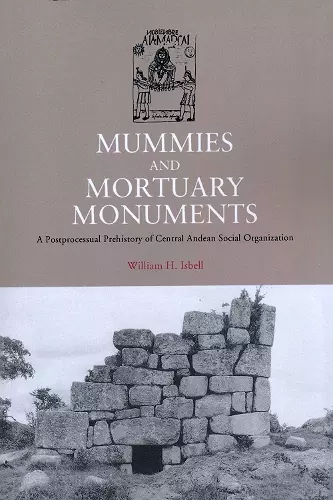Mummies and Mortuary Monuments
A Postprocessual Prehistory of Central Andean Social Organization
Format:Paperback
Publisher:University of Texas Press
Published:1st Oct '97
Currently unavailable, and unfortunately no date known when it will be back

A study of the Andean Ayllus suggesting their origins, history, cultural function and their role in the treatment and preservation of the dead.
A boldly revisionist view of the organization of the ayllu, ancient Andean kinship groups.
Since prehistoric times, Andean societies have been organized around the ayllu, a grouping of real or ceremonial kinspeople who share labor, resources, and ritual obligations. Many Andean scholars believe that the ayllu is as ancient as Andean culture itself, possibly dating back as far as 6000 B.C., and that it arose to alleviate the hardships of farming in the mountainous Andean environment.
In this boldly revisionist book, however, William Isbell persuasively argues that the ayllu developed during the latter half of the Early Intermediate Period (around A.D. 200) as a means of resistance to the process of state formation. Drawing on archaeological evidence, as well as records of Inca life taken from the chroniclers, Isbell asserts that prehistoric ayllus were organized around the veneration of deceased ancestors, whose mummified bodies were housed in open sepulchers, or challups, where they could be visited by descendants seeking approval and favors. By charting the temporal and spatial distribution of chullpa ruins, Isbell offers a convincing new explanation of where, when, and why the ayllu developed.
"This book provides an excellent review of the concept of the ayllu and its relationship to ancestor worship, architectural features, farming and landholding, political organization, and resistance to the state... It will be a hotly discussed and possibly controversial book." --Clark L. Erickson, Associate Professor of Anthropology, University of Pennsylvania
ISBN: 9780292717992
Dimensions: unknown
Weight: 454g
391 pages